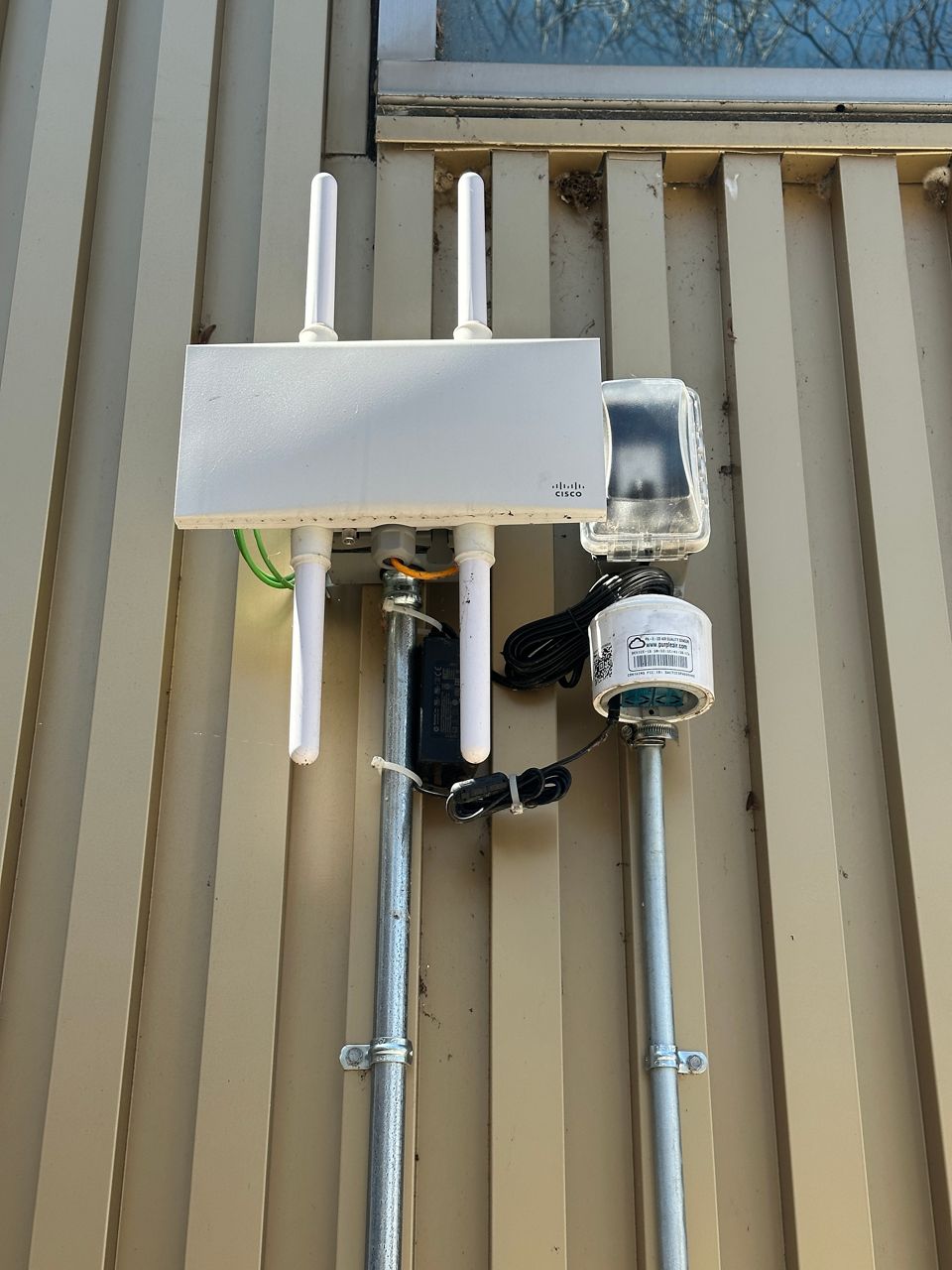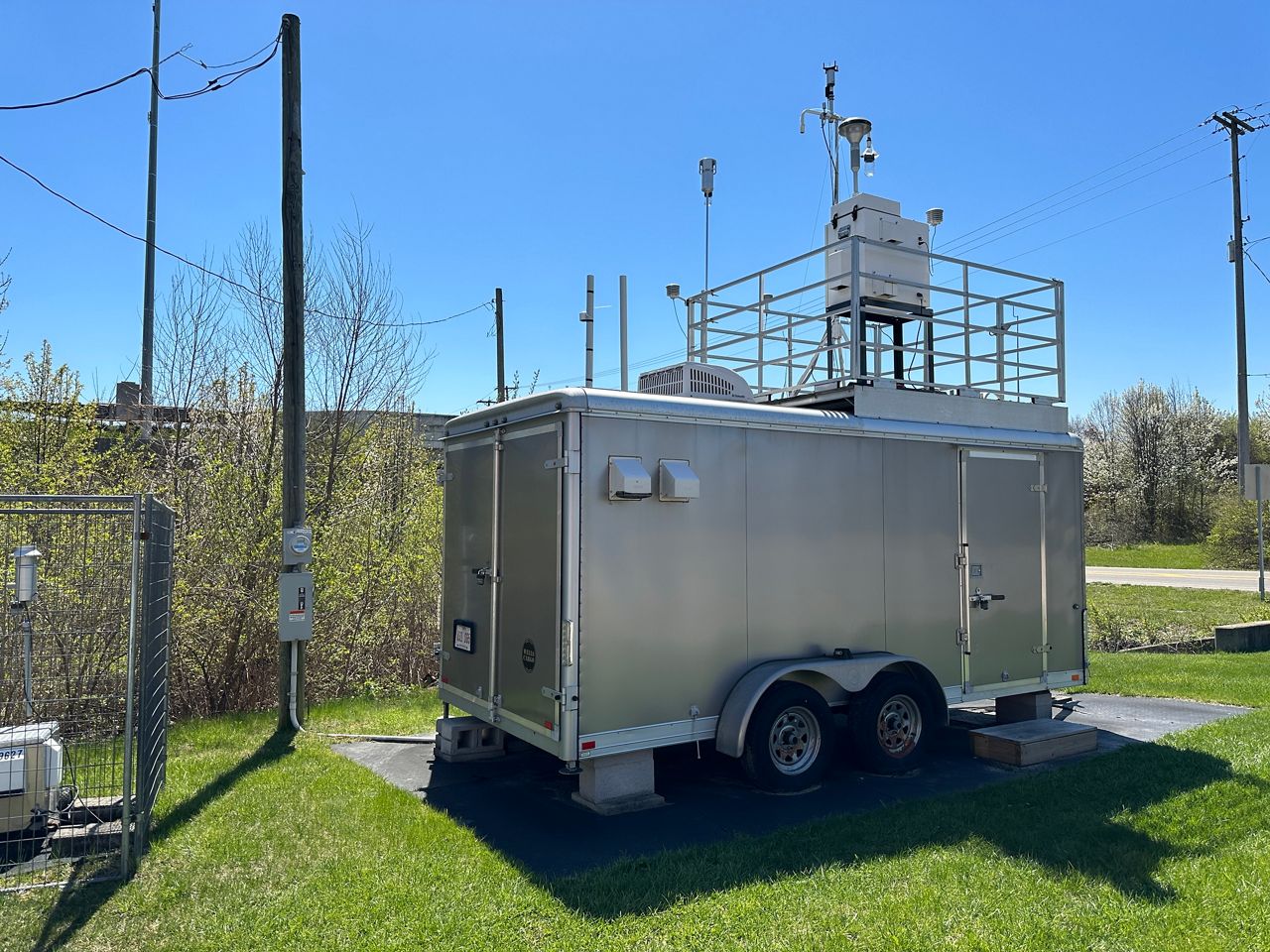CLEVELAND — Taking a deep breath is something we all do every day, but for people living with asthma or other lung diseases like Catherine Widemire, a resident of northeast Ohio, it isn’t always safe.
“Like the other day, we finally get a nice sunny day in Cleveland, but the air quality was horrible,” Widemire said. “So someone like me with asthma had to stay inside. So it's kind of, it's no fun.”
Alerts on the weather app warn her when there’s poor air quality. Many don’t pay attention, but Widemire has to as for her it can be a matter of life or death.
“I have to always check each city I go to and what the particle pollution is and what the air quality is in that city like from west side to east side,” Widemire said. “You can absolutely die from asthma attacks. And I know people who have, unfortunately. It's a very serious situation.”
She never leaves her home without two items, an N95 mask and an albuterol inhaler. Both help protect her from invisible, powerful lung irritants like ozone and particulate matter, also known as soot and smog.
Ozone, or smog, occurs when emissions from factories, cars, and burning coal and wood react with heat or sunlight in the atmosphere.
Particulate matter, or soot, is made up of tiny particles in the air from things like construction sites, unpaved roads, bonfires or wildfires.
The air quality index is largely based on those two pollutants.
A report put out by IQAir, a Swiss air quality technology company, points to Columbus as having the most-polluted air in the nation, something the Mid-Ohio Regional Planning Commission said isn’t true.
“We were surprised and confused by that. It's unlikely that we would have the worst air pollution in the country for many reasons,” said Brandi Whetstone, the sustainability officer for the Mid-Ohio Regional Planning Commission, also known as MORPC. “So we still want to meet with IQAir and learn more about how they put together this study and the methods that they use. But based on what we've been reporting, through the regulatory monitoring data, air quality continues to improve in the region.”
The Ohio EPA tracks air quality across the state using more than 250 high quality air monitors, which MORPC uses to create their air quality forecast that they put out for the region.

MORPC also gathers their own data. Thanks to a grant from the U.S. EPA, the organization partnered with the Franklin County Public Health Department to establish an air quality monitoring network using Purple Air monitors that measures air pollution neighborhood by neighborhood in Franklin County.
“There are concerns within disadvantaged and underserved communities that are experiencing a lot higher levels of pollution than other areas,” Whetstone said. “So we need to take a closer look at that. We need to take a look at those environmental justice concerns, and better deal with air pollution so that everyone can enjoy a better quality of life.”
The goal of the Purple Air monitors is to close the data gap between state and local data. This month they’ll have a year’s worth of data from about 20 air quality monitors and MORPC is already planning to expand the program.
“We came up with about 10 zip codes, we prioritize them and came up with about 10 zip codes, where we kind of committed our first set of Purple Air sensors,” said Prince Kwarteng-Crooklwnn, the air quality and sustainability coordinator for MORPC. “We've been collecting a year's worth of data for these sites. And we are nearing a time where we will be coming up with a final report for this project.”

The Ohio EPA said the state’s air quality has been improving over the last 30 years and meets all federal standards. The criteria pollutants, which are the ones that the U.S. EPA sets the standards for, include ozone, particulate matter, sulfur dioxide, carbon monoxide, nitrogen oxides and lead.
“We're very happy with where we are with our current air quality overall,” said Jennifer Van Vlerah, the assistant chief at Ohio EPA’s Division of Air Pollution Control. “Across all of Ohio, we are nearly meeting all of the different air quality standards. And we've seen steady improvement in air quality throughout the entire state for every one of the health based standards.”
Dirty air kills
According to the American Lung Association, dirty air kills roughly 110,000 Americans each year and induces nearly 3 million asthma attacks.
The nonprofit’s new "State of the Air" report finds nearly 120 million people live in places with failing grades for unhealthy levels of ozone or particle pollution.
A few of those places are in Ohio. Cleveland received an F for ozone pollution and a C for particulate matter, with 17 poor air quality days overall from 2019 to 2021. Cincinnati’s Hamilton county also received an F for ozone pollution and a C for particulate matter, tracking 18 poor air quality days overall. Columbus scored a B rating in both categories.
“If you're getting a failing grade, that's unacceptable,” said Ken Fletcher, the director of advocacy for Ohio for the American Lung Association. “If you have a failing grade for ozone pollution, that is not good air. That is air quality that needs to be improved. Having a failing grade means that there are far too many unhealthy days.”
Nationally, the report found that ozone pollution has improved across the nation. However, some communities feel the effects of air pollution more than others do. Out of the nearly 120 million people who live in areas with unhealthy air quality, more than 64 million, about 54%, are people of color. People of color were 64% more likely than white people to live in a county with a failing grade for at least one measure.
Fletcher said while bad air quality days immediately affect vulnerable populations like those with CODP, asthma and young children, it also can also have long-term effects on people with healthy lungs.
“Ozone pollution kind of acts like a sunburn on the lungs,” Fletcher said. “When you breathe it in the particle pollution, the little fine particles that they get into your lungs, it can enter your bloodstream, it can also lead to lung cancer.”
Ohio is lagging behind
Compared to the rest of the U.S. Ohio is consistently at the bottom of the pack for air quality improvements. Tracy Sabetta from Mom’s Clean Air Force said reasons include Ohio’s large manufacturing industry, the state’s heavy reliance on fossil fuels and our limited public transit system, pushing more cars to be on the road.
“There are not only asthma implications, but cardiovascular disease, neurological problems and air pollution is something that we don't think about every day because we don't always see it, but it is something that impacts our life and our children's lives every single day,” Sabetta said.
Ohio has a very high pediatric asthma rate and poor air quality increases the frequency of asthma attacks and how severe those asthma attacks will be. It can also increase the chance that a child will have to be hospitalized for their asthma attacks, according to the EPA.

“I no longer think about this from a future perspective,” Sabetta said. “I think about it from a today perspective because the impacts that we're seeing on children and on families and on those who are disproportionately impacted and vulnerable populations, we can't sit on our hands and wait for somebody else to do something.”
So while Ohio is meeting all the national standards, Fletcher said that’s not good enough.
“There's a difference between just meeting a standard that is inadequate, versus actually having healthy air,” Fletcher said.
Every county in the U.S. has a different air quality rating, but the air we breathe is all connected, reminding everyone that it takes all of us to help make sure that taking a breath of fresh air is truly fresh.
“Take an extra step to really be grateful for the breath that you just took,” Widemire said. “Air quality is everything. If you can't breathe, nothing else matters.”
How can we improve air quality
The American Lung Association said there are many things we can do at the federal, state and local level to improve our air quality so that as our cities continue to grow larger, they can grow better.
At the federal level, people can encourage the Biden administration to set new limits for ozone and particle pollution, as well as set new standards for power plant and vehicle emissions.
At the local level, elected officials can work on sustainability plans that increase investment in clean energy generation, like renewables, and electric buses and better public transit systems.
At a personal level, Ohioans can look at how they transport themselves. They can look at purchasing a hybrid or electric vehicle, carpool, bike and walk more. Also, they can switch to using electric lawn mowers this summer and limit bonfires.
“I would start with calling the Biden administration to move forward on several measures to clean up air pollution nationwide, including new pollution limits on ozone and particle pollution and new measures to clean up power plants and vehicles,”said Kimberly Covey, the executive director for the American Lung Association Northeast Ohio. “And then locally, call your state senators, call your congressman, and then call the people in your city, your representatives in your city, to urge them to bring up clean air because it does affect everybody and affects everybody’s lungs.”
The American Lung Association worked to raise more awareness about air quality during their annual Fight for Air Climb Sunday, April 30th at Progressive Field in Cleveland. If you would like to sign up for air quality alerts, click here.



